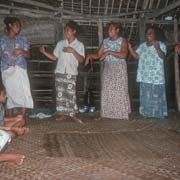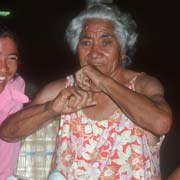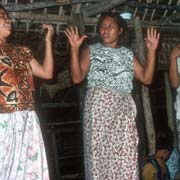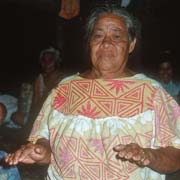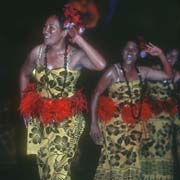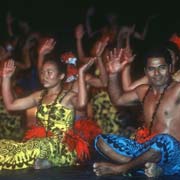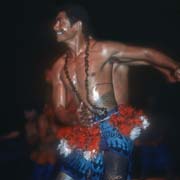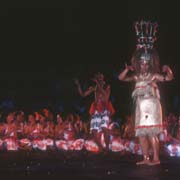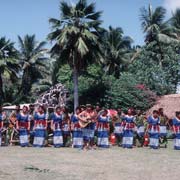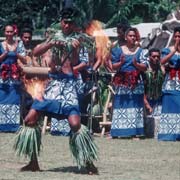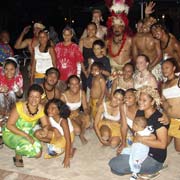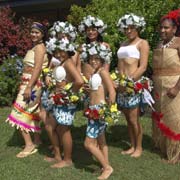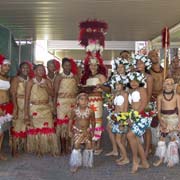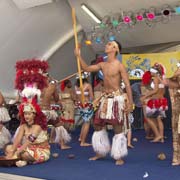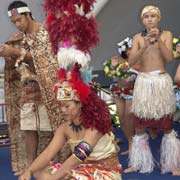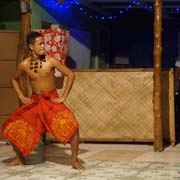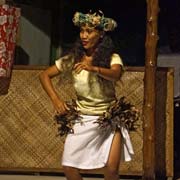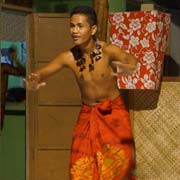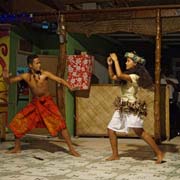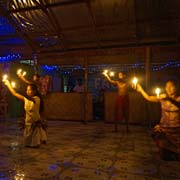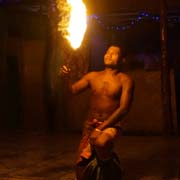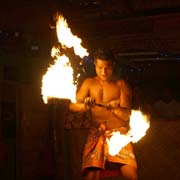Photos of The Culture of Samoa
The Culture of Samoa
The fa'a Samoa, traditional Samoan ways, has remained a very strong force and Samoan song and dance plays a large role. It may be completely spontaneous, when, for instance, a group of women start to sing and soon get up and dance the "siva", with gentle and graceful movements or the "sasa", where rows of dancers perform rapid movements, the rhythm provided by hitting rolled mats.
you may then send it as a postcard if you wish.
Especially elderly women sometimes do a really funny dance, having everyone laughing. Those women often sit together making the finely woven pandanus mats, the "'ie toga", that are used in ceremonial gift exchanges. A "fiafia" is the general term for a happy get-together and denotes spontaneous song and dance and, nowadays, also scheduled performances in tourist resorts.
The most important ritual is the 'ava ceremony which takes place during important occasions, but may also be demonstrated in cultural performances. The 'ava (kava), a drink made from the dried roots of the pepper plant (Piper methysticum) is prepared by the 'aumaga, a young man or woman; if a young woman, she would customarily be a taupou, the virgin daughter of a matai (chief). The 'aumaga would sit behind the tanoa, the wooden 'ava bowl and mixes and strains the beverage with a "fau", made from the bark of a hibiscus tree.
Tattooing (tautau) is still important in Samoan culture and a man who has undergone the painful procedure is called "soga'imiti"; his tatoo covers the areas from the ribs down to the knees and is called "Pe'a". It may take weeks to complete and used to be necessary if one wished to receive the title of matai (chief), although this is no longer required. Less common nowadays is the female tatoo, "Malu", parallel patterns on the legs, from upper thighs to just below the knees.



